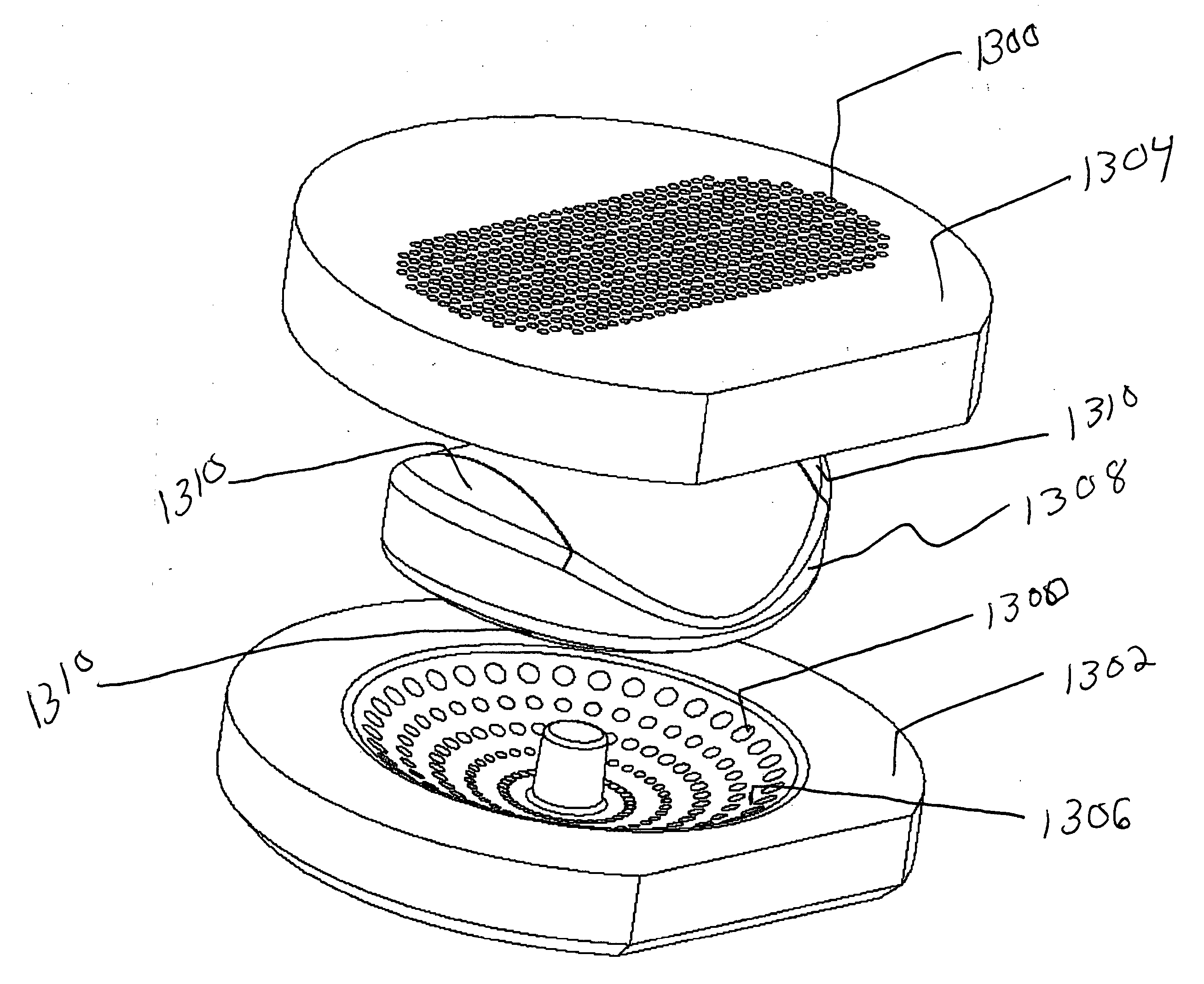Passive lubricating prosthetic joint
a prosthetic joint and lubricating technology, applied in the field of orthopaedic surgery, can solve the problems of affecting the long-term affecting the performance of traditional prosthetic joints, and wear occurring at the interface of surfaces within joints, etc., to achieve the effect of facilitating motion, facilitating motion, and facilitating motion
- Summary
- Abstract
- Description
- Claims
- Application Information
AI Technical Summary
Benefits of technology
Problems solved by technology
Method used
Image
Examples
Embodiment Construction
[0038] The teachings of the present application can find utility in various joint replacement situations, such as knee prosthetics, hip prosthetics and intervertebral prosthetic discs. With particular reference to intervertebral embodiments, FIG. 1 shows a portion of a vertebral column, designated 100. As depicted, the vertebral column 100 includes a lumbar region 102, a sacral region 104, and a coccygeal region 106. As is known in the art, the vertebral column 100 also includes a cervical region and a thoracic region. For clarity and ease of discussion, the cervical region and the thoracic region are not illustrated.
[0039] As shown in FIG. 1, the lumbar region 102 includes a first lumbar vertebra 108, a second lumbar vertebra 110, a third lumbar vertebra 112, a fourth lumbar vertebra 114, and a fifth lumbar vertebra 116. The sacral region 104 includes a sacrum 118. Further, the coccygeal region 106 includes a coccyx 120.
[0040] As depicted in FIG. 1, a first intervertebral lumbar ...
PUM
| Property | Measurement | Unit |
|---|---|---|
| osmotic pressure | aaaaa | aaaaa |
| capillary force | aaaaa | aaaaa |
| monolithic structure | aaaaa | aaaaa |
Abstract
Description
Claims
Application Information
 Login to View More
Login to View More - R&D
- Intellectual Property
- Life Sciences
- Materials
- Tech Scout
- Unparalleled Data Quality
- Higher Quality Content
- 60% Fewer Hallucinations
Browse by: Latest US Patents, China's latest patents, Technical Efficacy Thesaurus, Application Domain, Technology Topic, Popular Technical Reports.
© 2025 PatSnap. All rights reserved.Legal|Privacy policy|Modern Slavery Act Transparency Statement|Sitemap|About US| Contact US: help@patsnap.com



